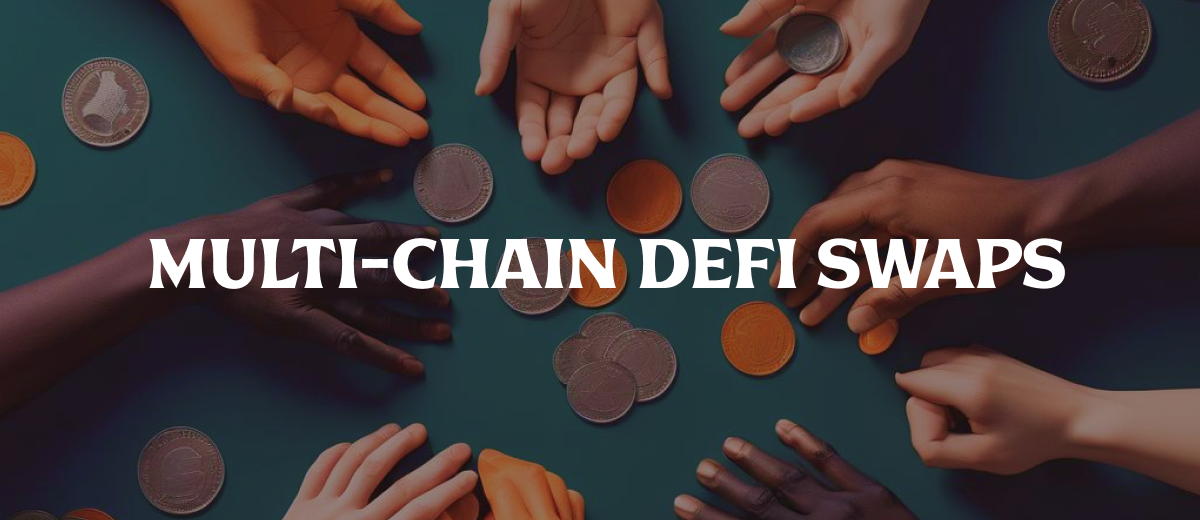What Are The Most Exciting Use Cases of Account Aggregation?
The original NEAR Blog announcing Account Aggregation detailed some of the most exciting use cases for the solution. We will cover some of them here in more depth and also talk about why Account Aggregation is truly a gamechanger for Web3 as a whole.
To get started in the words of NEAR Co-Founder, Illia Polosukhin:
“I want to propose a better vision for the entire Ethereum ecosystem and all of Web3: let’s work together on advancing mainstream adoption via chain abstraction. The idea is that blockchains must be abstracted away from the user so they are not barriers to entry or participation. NEAR has been focusing on this vision since 2018 and today has achieved the most users of any network in Web3: 12.4 million monthly active accounts and 34 million accounts overall.”
(You can read the full blog from Illia on near.org)
Gaming User Base Growth: In our opinion, going into a cycle with hundreds of Web3 Games launching, the opportunity to use NEAR’s Account Aggregation model to onboard gamers is one of the ripest opportunities to pioneer the Account Aggregation Stack. Whether the game is on Avalanche, an ETH L2, Solana, or BNB Chain - most games rely on fast finality, and want to hide as much of the complexity as possible from users.
Multi-Chain DeFi Swaps: Tapping into liquidity on 1 chain, without having to bridge assets means that if a paymaster relay is in place, a user could hypothetically trade Solana Meme coins via a NEAR Account, and then swap quickly over to an Arbitrum Liquidity pool or take out a loan without needing to manually bridge. DeFi concepts like flash loans or on-chain derivative trading stand to have new opportunities emerge, although the full potential or danger of such solutions remains to be discovered.
Multi-Chain Non-Fungible Value and RWA Markets: Equally trending this cycle are the notion of ‘Real World’ Assets and Non-Fungible Value. NEAR’s Account Aggregation technology is a HUGE level up for swapping everything from NFTs to Carbon Credits - as the assets don’t actually have to move chains (something they actually cannot do).
A Unified Payment Layer for Crypto: Don’t sleep on this one. Non-Fungible value is only waking up in Crypto, while fungible value is often siloed into specific ecosystems. With account abstraction, the door opens for a Unified Remittances, Payments, and P2P trading layer - whereby any token or dApp can help broker trades across any blockchain. Most immediately, this solves ‘the merchant problem’ of crypto - whereby merchants have trouble receiving or sending crypto on a business level because everyone is trying to transact with different tokens through different blockchains. More granularly it opens up the pathway for foundational use cases in transferring Non-Fungible Value: Future Real Estate Markets, Basket Asset trades, and even for ownership, titles, or loyalty rewards.
Middleware Oracle, Relayer, and MEV Opportunities: This entire area is prone to speculation but the potential solutions can be summarized as follows: As more chains become integrated into specific chain abstraction use-cases, more opportunities will present themselves across chain. On the one hand this refers to things like data indexing and data availability, on the other it opens up new doors for exchange-rate stakeholders looking to build a business around moving tokens between chains. In some scenarios, it even creates massive MEV opportunities if a dApp might risk it (slow finality + high transaction cost).
In total, we estimate there to be well over 100 dApps, middleware use cases, and low hanging business opportunities that will stem from building ON TOP of NEAR’s Account Aggregation stack.
Why Should You Care About $NEAR Account Abstraction if you work in another L1 Ecosystem?
It’s simple: NEAR’s Account Aggregation strategy allows any token to compete for transaction or user fees across any chain. In the first demo’s of account abstraction, $SWEAT coin demonstrated how it could pay for transactions on $BNB Chain using $SWEAT. In a similar vein, any L1 ecosystem can build on NEAR’s account aggregation stack and use their native token to fund gas and transaction costs on any other blockchain network. This creates a new driver of growth for other chains and increased competition for actually useful dApps. And - at the end of the day, $NEAR is still required for ALL transaction fees - no matter the token, because the transactions are being brokered and confirmed via NEAR Accounts and NEAR MPC Nodes.
Conclusion
The litmus test of NEAR’s account aggregation success will be how valuable its use-cases, can become. In the best case scenario it presents a unique opportunity for crypto as a whole: A new playing field for dApps, a new playing field for L1 tokens, and a much needed focus on the user. From these three opportunities alone, there are billions of dollars of value that stand to be created from a variety of different use-cases, or middle-ware infrastructure solutions.








